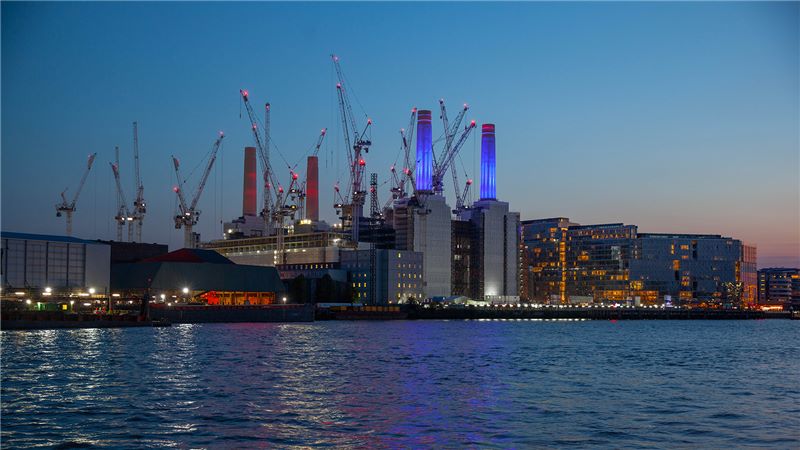Nailing the forecast: how data builds better construction programmes
The construction industry has come a long way on its innovation journey over the past decade, with new solutions, processes, systems, and tools being incorporated into the way we work. Mace sits right at the forefront of that revolution as we invest in new technologies and adopt meaningful approaches that will encourage the use of innovation in ways which the built environment has never experienced before. Innovation has always been embedded in Mace’s culture, and our Innovation Strategy is dedicated to going further than we’ve ever gone before.
The first in a series of articles outlining the role of data in innovation, Tom Brookes, Operations Director, begins by exploring how the value of data does not stop at its first or original use. The built environment can utilise meteorology, blending tools from other parts of our day-to-day lives, and adopting radical approaches to overcome the challenges our industry is facing.
Meteorology, meet Mace
With the World Health Organisation anticipating an increasing intensity of extreme weather conditions resulting from climate change, the construction industry must lean on its resources to overcome the increasing pressures and challenges that lie ahead. A Met Office report on climate extremes found that the UK has experienced higher maximum temperatures and longer warm spells in recent years. These summer heatwaves, coupled with increasingly wetter winters across the UK will not only affect existing infrastructure, but create challenges for the way we build, going forward.
One of our project teams working at a major rail programme in the UK has recently developed an exciting new tool which uses a holistic data-driven approach to predict hyper-local weather forecasts. The site-specific data provides accurate and reliable monitoring of short and long-term weather forecasts, sudden changes in atmospheric conditions, and historical data. The result is that we are able to predict site trends all year round, navigating challenges and managing them better.
How does it work? Real-time intelligence in one single dashboard is key to identifying opportunities for effective planning, scheduling and risk management. And the possibilities are endless. This highly specific solution means putting predictability at the heart of our operations and, in turn, we plan for specific risks and mitigate on-site weather-related delays by optimising our programmes through the interconnectivity of data led reporting systems.
Delivered as part of our PMO (Programme Management Office) offering – which facilitates data gathering, management and analytical processes to predict, understand, and influence the time and cost outcomes of a project or programme – this innovative approach to weather prediction is doing just that. A greater grasp of trends and upcoming conditions is giving our team insights to make predictions, anticipate the inevitable external influences on our programmes, develop highly precise schedules, and overcome challenges further down the line, sooner in our planning, which all helps our teams to understand risk and provide increased certainty for delivery.
When it rains, it pours
Managing complex projects and programmes is difficult, and this becomes even more challenging with changing weather conditions, extreme seasons, and intense weather events. But what does this mean for us?
Winters are becoming wetter and stormier across each of four global hubs, with increasing flood risks being only one example that we see each and every year. Whilst this may have unfavourable effects on our day-to-day lives, it certainly influences the speed at which we can build.
When wind levels are too high, we must suspend crane operations, stop working at height, ensure structures are secure, and understand the risks around the prevention of dust-creating activities ahead of dry-spells. Meanwhile storms bring a combination of issues which can cause immediate work stoppages, material damage, and long-term project delays.
Take a look at concrete for example. The industry’s second-most-used material requires strict atmospheric temperatures, controlled drying periods, and other environmental conditions to achieve high specification finishes. Deviation from these requirements will have detrimental effects on its strength, durability, abrasive resistance, and the overall quality of our buildings as a result.
It's clear how much our programmes are affected by poor weather and inconsistent climates, so why not use forecasting technology to inform our programme schedules? We might not be able to change the weather, but we can change what we do about it. Mace is doing just that. The historical data we have collated at our project has allowed us to identify and anticipate these trends, informing our project forecasts for the upcoming seasons. Preparing for a heatwave for example, means applying budgets at the right times, so that we can purchase sun protection, neck-guards, cooling equipment, hydration stations, and – if you’re lucky enough to work at one of Mace’s sites – ice-cream.
Our programmes are already accounting for the careful monitoring and adjustment of construction practices during extreme weather conditions to develop consistently accurate, data-informed programmes. Why? Because it’s the way forward. With the right approach to advancing technology and innovative methods, we can do what is right for our people, and our industry. Delivery can be faster, safer, and more productive. Ensuring we provide the right tools and training for our people to work with cutting-edge innovation will ensure that the industry will go further than we’ve ever gone before.
Preparing for the future
The London Climate Resilience Review has recently published a final report following the frequency of climate impacts, guiding several recommendations to prepare London for more extreme weather. It’s no longer a case of whether our industry can be innovative; it’s whether we can afford not to be. Coupled with delivering high quality buildings and infrastructure in line with programme schedules that are compliant first time, climate change is a challenge we must both tackle and find a way to work around.
That’s why meteorology is much more than just atmospheric science. It is the newest solution to building infrastructure with clearer certainty and predictability. Integrating data from previous weather trends and generating future forecasts that inform programmes will enhance the efficiency and productivity of the entire built environment. Innovative approaches to the way we schedule our programmes will produce better quality infrastructure and proficiency in the way we use technology going forward to get to where we must be.












